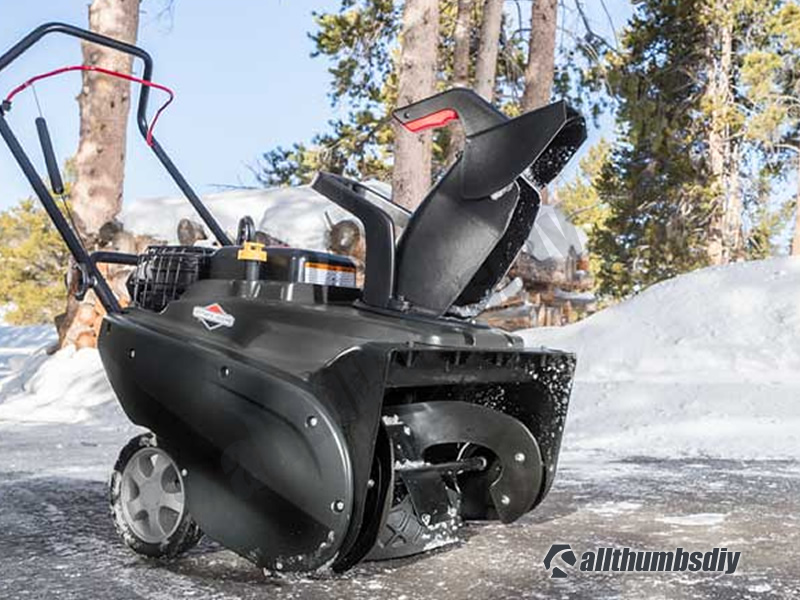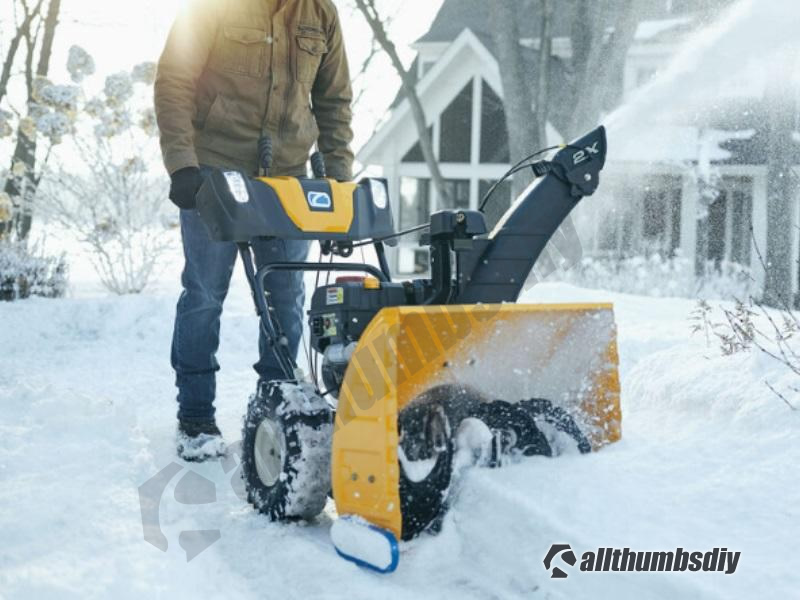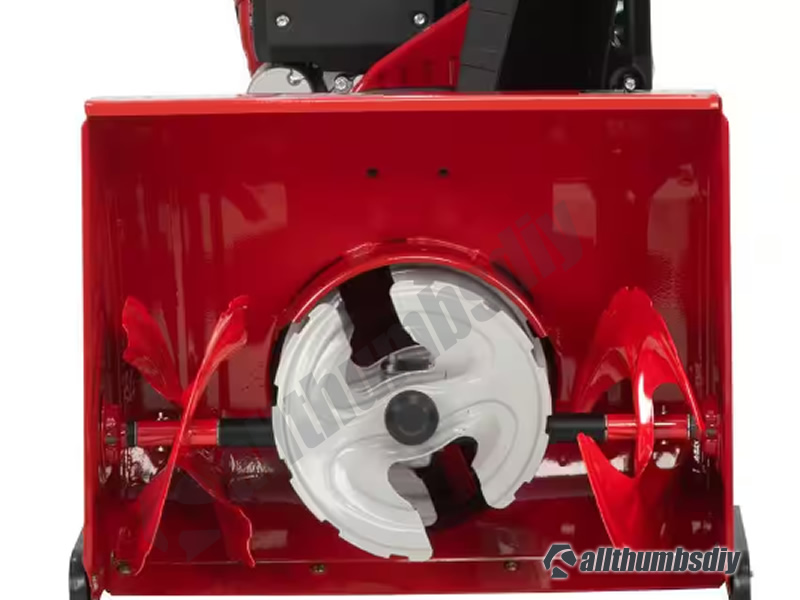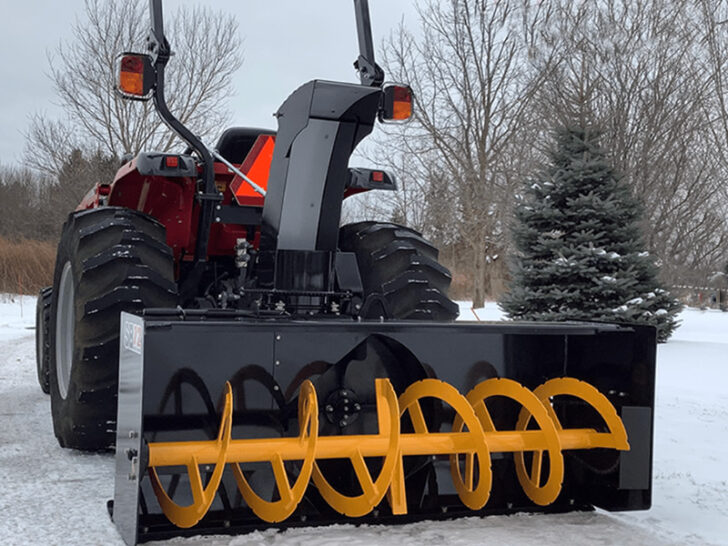Snow blowers, essential tools for efficient snow removal, come in various types, notably single, double, and triple stage models. Understanding the differences, technical specifications, and maintenance requirements of each type is crucial for making an informed decision.
In regions where snowfall is a regular part of winter, a reliable snow blower is not just a convenience, but a necessity. Understanding the different types of snow blowers – single, double, and triple stage – is crucial for anyone looking to invest in an efficient and effective snow removal solution.
In this guide, we’ll delve into the specifics of each type, discussing their functionalities, technical specifications, and the pros and cons of each. Additionally, we’ll explore the maintenance requirements vital for ensuring your snow blower remains in top condition season after season. Whether you’re facing light dustings or formidable snowdrifts, our guide will help you choose the right snow blower for your needs.
Single-Stage Snow Blowers
Single-stage snow blowers are designed with efficiency and speed in mind, particularly for handling moderate snowfalls. These machines utilize a collection auger that both scoops up and propels snow directly to the chute. The key to their effectiveness lies in the high RPM (revolutions per minute) of the auger, which spins much faster than those in two-stage models. This high speed is crucial for increasing the velocity of the snow enough to efficiently eject it through the chute.
Unlike their two-stage counterparts, single-stage blowers typically lack wheel drive. Instead, they rely on the motion of their rubber augers to pull themselves forward, which works effectively on smooth surfaces. This design allows them to navigate mild slopes and even frozen ground or grass, albeit with a bit more effort on rougher terrains.
Single-stage blowers excel in clearing paths during most snowstorms, offering a more manageable alternative to the larger two-stage models. They are particularly advantageous for snowfalls of less than 5 inches; beyond this, they may require additional effort to push through the snow. With a bucket intake housing ranging from 10 to 16 inches, they might struggle with deep drifts, end-of-driveway (EOD) snow build-up, or heavy snowfalls.
However, for lighter snows, single-stage snow blowers are not only fun to use but also reduce the wear on larger machines if you own both types. They are especially handy for clearing walkways, decks, and roofs, and despite their smaller size and horsepower, a well-built 3hp single-stage blower can throw snow 20 to 25 feet, sometimes clearing an area faster than a two-stage model. Notably, they perform surprisingly well with very wet snow, such as slush, where two-stage blowers often struggle due to the lower RPM rate of their augers, which is less effective in collecting wet snow.
What Are They?
Single-stage snow blowers are designed for light-duty work. They use a single auger made of hard rubber or plastic to scoop up snow and throw it out of the chute in one motion.
Functional Specs
- Auger Material: Hard rubber or plastic.
- Clearing Width: Generally, 18 to 22 inches.
- Snow Throwing Distance: Up to 25 feet.
- Engine Type: Primarily Electric
Pros and Cons
On the plus side, single stage snow blowers are lightweight and highly maneuverable, making them a breeze to operate, especially in small areas. Their compact size also ensures easy storage and handling. Additionally, they are generally more affordable, offering a cost-effective solution for those dealing with moderate snowfall.
On the downside, single-stage snow blowers have limitations in their capabilities. They are not well-suited for heavy, wet snow or large, expansive areas, as their single auger mechanism can struggle with such conditions.
Moreover, since the auger makes direct contact with the ground, these blowers are not the best choice for gravel or uneven surfaces, as they can pick up and throw rocks or debris. This direct contact also means they wear out faster, particularly the auger blades, necessitating more frequent maintenance or replacements. Hence, while they are an excellent choice for light-duty tasks, their utility diminishes in more demanding snow removal situations.
Pros:
- Lightweight and easy to maneuver.
- Ideal for small driveways and sidewalks.
- Less expensive than multi-stage models.
- Need a long extension cord (for electric models)
Cons:
- Not suitable for heavy, wet snow or large areas.
- Auger makes direct contact with the ground, so not ideal for gravel surfaces.
Maintenance
- Regularly check and replace the auger blades if worn.
- For gas models, perform engine maintenance like oil changes and spark plug replacements.
Double-Stage Snow Blowers
Moving up in power and capability, double-stage snow blowers, also known as two-stage snow blowers, offer a significant step up from their single-stage counterparts.
Designed to tackle heavier snowfall and more challenging conditions, these robust machines are equipped with not just an auger for breaking up snow but also an impeller to help throw the snow out of the chute.
This two-step process allows for more efficient and effective snow removal, especially in areas with frequent, heavy snowfall. Ideal for medium to large driveways and paths, double-stage snow blowers can handle a wider range of snow types and depths, making them a versatile choice for those in snow-prone regions.
What Are They?
Double-stage snow blowers, also known as two-stage snow blowers, are more powerful than single-stage models. They have an auger to break up the snow and an impeller to help throw the snow out of the chute.
Functional Specs
At their core, these double-stage snow blowers usually feature a metal auger, robust enough to break up compacted snow and ice.
Unlike single-stage blowers, the auger doesn’t make direct contact with the ground, allowing safe usage on various surfaces, including gravel. Following the auger, an impeller – essentially a powerful fan – takes over, propelling the snow up and out of the chute. This mechanism significantly increases the snow throwing distance, often up to 40 feet or more.
In terms of size, double-stage snow blowers boast a clearing width typically ranging from 20 to 30 inches, enabling them to cover more ground quickly. Most are gas-powered, providing the necessary force to tackle heavy snowfalls. Their engines are more powerful than those found in single-stage models, giving them the extra oomph required for demanding snow removal tasks.
These features collectively make double-stage snow blowers a potent ally against the challenges of heavy and dense snow, ideal for those needing to clear larger, more expansive areas.
- Auger Material: Metal.
- Clearing Width: 20 to 30 inches.
- Snow Throwing Distance: Up to 40 feet.
- Engine Type: Mainly gas-powered.
Pros and Cons
Double-stage snow blowers come with a distinct set of advantages and drawbacks. On the upside, their ability to handle heavier snowfall and larger areas is a significant benefit, making them ideal for those living in regions with consistent, heavy snow.
The design, where the auger doesn’t touch the ground, allows safe operation on various surfaces, including gravel driveways. Additionally, their powerful engines and wider clearing width mean quicker and more efficient snow removal.
However, these advantages are counterbalanced by certain downsides. Double-stage blowers are heavier and bulkier, making them less maneuverable and requiring more storage space. They also tend to be more expensive than single-stage models, both in terms of initial cost and ongoing maintenance.
Furthermore, their gas-powered engines necessitate regular maintenance like oil changes and spark plug replacements, adding to the upkeep efforts. Therefore, while double-stage snow blowers are powerful and versatile, they demand a higher investment and maintenance commitment.
Pros:
- Capable of handling heavier snowfall and larger areas.
- The auger doesn’t touch the ground, making it suitable for a variety of surfaces.
Cons:
- Heavier and more difficult to maneuver.
- More expensive than single-stage blowers.
Maintenance
- Regular maintenance of the engine.
- Check and lubricate the auger and impeller bearings.
- Inspect belts and replace them when necessary.
Triple-Stage Snow Blowers
As we delve into the realm of triple-stage snow blowers, we enter a territory designed for the most arduous and demanding snow removal tasks.
These top-tier machines represent the pinnacle of snow-clearing technology, combining raw power with advanced design to tackle the most challenging and heavy snow conditions.
Triple-stage snow blowers are distinguished by their three-stage snow clearing system: two augers for breaking up and gathering snow, and an accelerator that speeds up the process, feeding the snow more efficiently into the impeller for discharge.
This configuration allows them to clear snow faster and throw it farther than their single and double-stage counterparts. Engineered for maximum efficiency and performance, triple-stage snow blowers are the ultimate choice for large, wide areas such as long driveways and commercial spaces that experience regular, heavy snowfall.
What Are They?
Triple-stage snow blowers are the most powerful, featuring two augers and an accelerator to cut through and propel the snow to the impeller at a faster rate.
Functional Specs
Triple-stage snow blowers are the heavyweights in the world of snow removal, designed with advanced functional specifications to handle the most challenging snow conditions. These machines typically feature two robust metal augers that work in tandem to break up and collect the snow.
The key differentiator in a triple-stage blower is the inclusion of an accelerator, which speeds up the snow intake process, pushing it rapidly towards the impeller. This accelerator not only enhances the efficiency of snow gathering but also allows the impeller to throw snow at impressive distances, often exceeding 50 feet.
The clearing width of triple-stage blowers is generally over 30 inches, making them ideal for clearing large areas quickly. They are exclusively gas-powered, equipped with large, powerful engines to provide the necessary strength for their intensive operation.
Additionally, these models often come with features like power steering and heated handles, adding to their ease of use in harsh winter conditions. The combined effect of these specifications is a snow blower that offers unparalleled performance in heavy snowfall, making them a top choice for those with extensive snow clearing needs.
- Auger Material: Heavy-duty metal.
- Clearing Width: Over 30 inches.
- Snow Throwing Distance: Up to 50 feet or more.
- Engine Type: Gas-powered, often with larger engines.
Pros and Cons
Triple-stage snow blowers, while unparalleled in their snow-clearing abilities, come with a distinct set of pros and cons. On the upside, their unmatched performance in extreme conditions is a significant advantage. These machines excel in handling deep, heavy, and compacted snow, making them ideal for large and wide areas, such as commercial spaces or long driveways.
The speed at which they clear snow is also notably faster than that of single or double-stage models, saving valuable time during extensive snow removal tasks.
However, these benefits are offset by certain drawbacks. Triple-stage snow blowers are the most expensive among the snow blower types, representing a substantial investment. They are also considerably heavier and larger, demanding more storage space and often requiring more physical effort to operate, despite advanced features to aid in maneuverability.
Furthermore, their maintenance is more involved due to the complexity of their design and the larger engines they possess. This means more frequent and potentially more costly upkeep. Therefore, while triple-stage snow blowers are the powerhouses of snow removal, they demand a higher initial investment, more storage space, and greater maintenance, making them suitable for those with extensive, demanding snow removal needs.
Pros:
- Exceptional performance in extreme conditions.
- Ideal for large, wide areas with heavy snowfall.
- Faster snow clearing than single and double-stage models.
Cons:
- Significantly more expensive.
- Heavy and requires more storage space.
Maintenance
- Comprehensive engine maintenance.
- Regular checks on the augers and accelerator.
- Frequent lubrication of moving parts.
Conclusion
Choosing the right snow blower depends on your specific needs, such as the size of the area to be cleared and the typical snowfall.
While single-stage blowers are suitable for light snow and smaller areas, double and triple-stage models offer more power and capacity for tougher conditions.
Regular maintenance is key to ensuring the longevity and performance of any snow blower, regardless of its type. By understanding the technical details and maintenance requirements of each type of snow blower, you can select the model that best suits your winter needs.
You May Also Like
Sizing a Snow Blower – Bigger is Not Better
Embarking on the journey of selecting a snow blower for your new home involves understanding your specific needs and the machine’s capabilities. It’s important to consider the size of your clearing area, the type of snowfall you typically face, and the snow blower’s power and size to ensure efficient clearing. Additionally, features like chains for…
Continue Reading Sizing a Snow Blower – Bigger is Not Better
Used Snow Blowers – Buying Guide
Used snow blowers can be a smart choice if you are looking to find an efficient and cost-effective snow removal solution. Over the past two decades, the reliability of snow blowers has significantly improved, thanks to advancements in technology and design. However, buying a pre-owned machine comes with its own set of considerations. This article…
Snow Throwing – How to Get the Maximum Distance
When evaluating a snow blower’s performance, it’s crucial to recognize that throwing distance is not solely determined by the chute’s height. Instead, it’s the result of an integrated design involving various parts working in unison and the challenge for engineers lies in balancing throughput with distance. A machine capable of throwing snow far may struggle…
Continue Reading Snow Throwing – How to Get the Maximum Distance
Rebuilding a Nikki Carburetor on John Deere 1330SE Snowblower
KEY POINTS With clear instructions, rebuilding or thoroughly cleaning a carburetor is not that hard Extra replacement parts should be purchased before starting this project INTRODUCTION When I was first told that I have to rebuild a carburetor on my Generac Wheelhouse 5550 generator, I was downright skeptical. But like everything else in life, things…
Continue Reading Rebuilding a Nikki Carburetor on John Deere 1330SE Snowblower
The Ultimate Resource Guide for John Deere 1330SE Snowblower
As it happens with all power equipment, things start to break as they get older. If you are a do it yourself kind of person, that means you need to troubleshoot problem(s), buy necessary replacement parts and make repairs. To do your job effectively, you need information. I have collected lots of hard to find…
Continue Reading The Ultimate Resource Guide for John Deere 1330SE Snowblower
Converting to Non-OEM Headlights on John Deere 1330SE Snow Blower
This article is a follow up from my previous post titled, Troubleshooting a Broken Headlight on John Deere 1330SE Snow Blower, where I replaced my faulty headlight bulbs on my John Deere snow blower. Specifically, a reader left a note about replacing his OEM bulbs with a BA15s 1156 G18 parking light model from RCTTCO.…
Continue Reading Converting to Non-OEM Headlights on John Deere 1330SE Snow Blower










